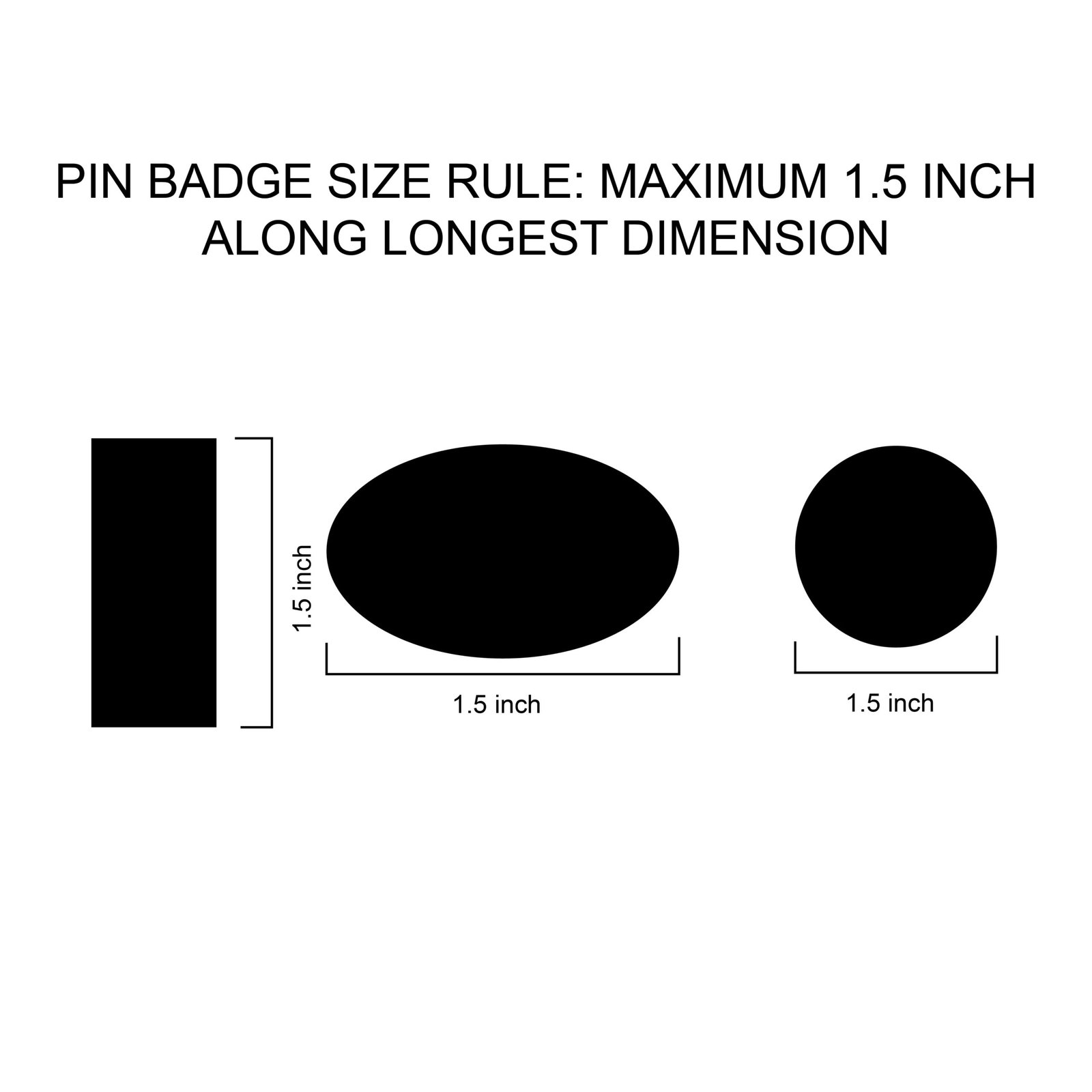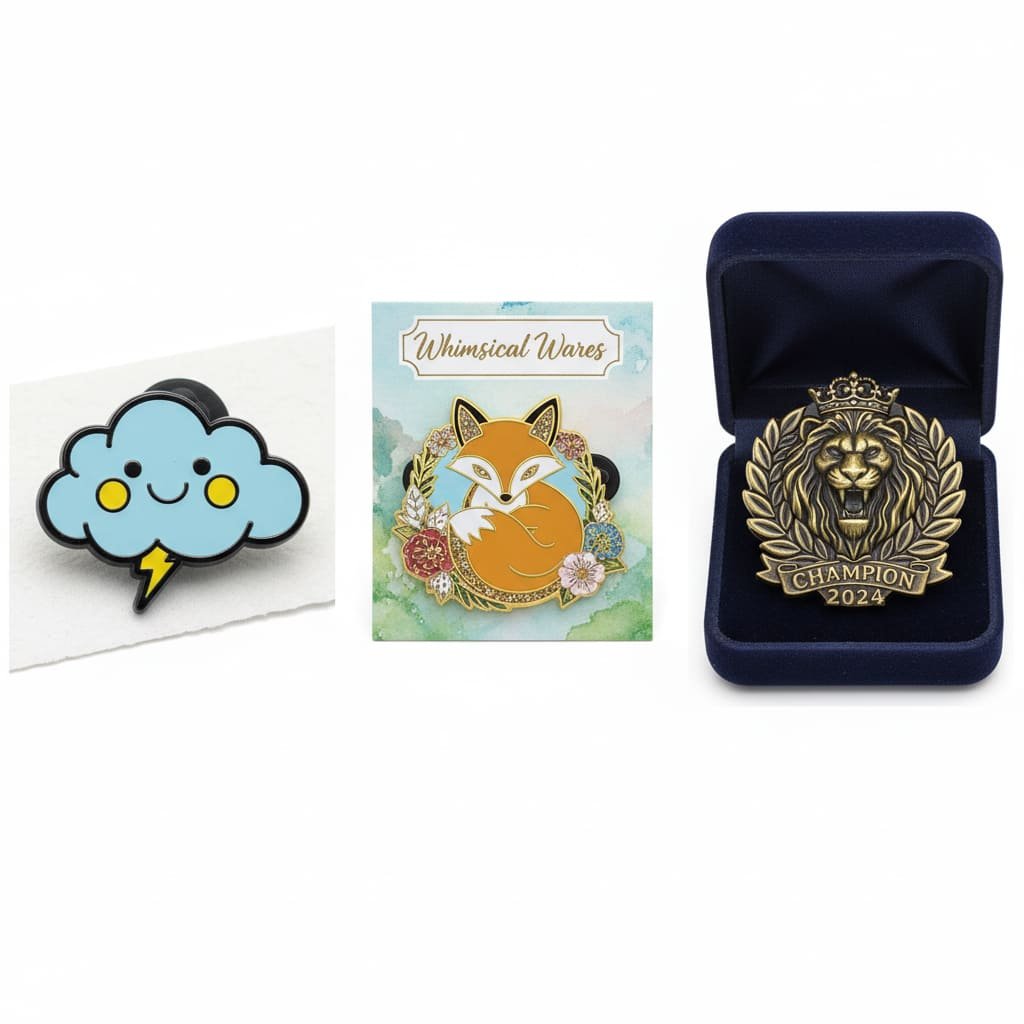You’ve submitted two different pin designs for a quote. One comes back at $2.50 per piece, the other at $5.50. They’re the same size, so what gives? The world of custom manufacturing is filled with variables that can seem mysterious, but they are all rooted in a simple reality: time, materials, and labor. Understanding these factors is the key to mastering your budget and designing a pin that is both stunning and cost-effective.
This is your definitive ‘insider’s look’ into the economics of pin production. We will pull back the factory curtain and break down, in exhaustive detail, exactly how pin size and design complexity translate into real-world costs. By the end of this guide, you will not only understand your price quote but will be empowered to make strategic design choices that give you the absolute best value for your investment. For a complete overview of the entire creation process, you can always refer to our Ultimate guide til tilpassede jakkeslagsnåler.
Innholdsfortegnelse
The Core Equation of Pin Manufacturing
At its heart, the price of any custom pin is determined by a straightforward equation. Grasping this concept is the first step to understanding your quote.
The formula is simple: (Size + Complexity) ÷ Quantity = Your Final Cost Per Pin. While this guide focuses on Size and Complexity, never forget the power of Quantity. It is the great multiplier—or divider—of your costs.
De “Big Three” Cost Drivers Table
The Main Factors Driving Your Pin’s Price
| Primary Cost Driver | Why It Matters | Impact on Final Price |
|---|---|---|
| Quantity | Spreads fixed setup costs (like the custom mold) across more units, making each pin cheaper. | Exponential. The single biggest factor in lowering the per-pin price. |
| Size | Directly impacts the amount of raw materials used, the pin’s weight, and the machine time required. | Linear. A larger pin will always cost more than a smaller one. |
| Complexity | Directly impacts the amount of skilled labor time, the need for specialized materials, and the potential for defects. | Variable. The most nuanced factor, with many different cost levels. |
A Masterclass on Size: More Than Just Millimeters
The physical size of your pin is one of the most direct and easy-to-understand cost drivers. Let’s break down exactly how it influences the final price.
Raw Material Consumption
This is the most obvious factor. A 2-inch pin has four times the surface area of a 1-inch pin of the same design. This means it requires four times as much raw metal and four times as much enamel paint to produce. This direct increase in material cost is a primary component of its higher price.
How Pin Size is Measured: The “Longest Dimension” Rule
This is a common point of confusion for new buyers. A pin’s size is determined by its longest point, whether that’s its height or its width. So, a rectangular pin that is 1.5 inches tall and 1.0 inch wide is priced as a 1.5-inch pin. A circular pin that is 1.25 inches in diameter is priced as a 1.25-inch pin. You do not have to fill the entire area; the price is based on the longest possible measurement.

The Hidden Factor: How Size Affects Thickness
To maintain its structural integrity, a larger pin must be made from thicker metal to prevent it from bending or feeling flimsy. This increase in thickness also adds to the material cost and weight of the pin.
Standard Thickness by Size Table
Typical Pin Thickness Based on Size
| Pin Size (Longest Dimension) | Standard Thickness | Why It’s Necessary |
|---|---|---|
| 0.75″ – 1.25″ | 1.2mm – 1.5mm | Provides standard durability for common, wearable sizes. |
| 1.5″ – 2.0″ | 1.5mm – 2.0mm | Increased thickness is essential to prevent bending or warping. |
| 2.0″+ | 2.0mm+ | Required for absolute structural stability on large, heavy pieces. |
A Deep Dive into Design Complexity
This is where the nuances of pricing truly come into play. A “complex” design costs more because it requires more skilled labor, more time, and sometimes specialized materials. Let’s break down every factor that contributes to complexity.
Complexity Factor #1: The Number of Colors
The good news is that most pin manufacturers include a generous number of enamel colors for free—typically up to seven. For most designs, this is more than enough. However, if your artwork is particularly colorful, each additional color beyond the free limit will add a small fee, usually around $0.04 to $0.10 per pin.
The reason for this extra cost is labor. Enamel colors are filled by hand, one at a time, by our skilled artisans. A 10-color pin requires almost twice the manual labor of a 5-color pin, increasing the production time and the potential for error. This is a crucial point we cover in our guide to Pantone color matching.
Complexity Factor #2: Cutouts (Negative Space)
Cutouts are any holes or hollow areas that are pierced completely through the metal of the pin. They can add a lot of visual interest and a sense of lightness to a design.
However, they add to the cost because creating cutouts requires a more complex, two-part mold and an additional manufacturing step (piercing). This extra process also increases the risk of the pin warping or breaking during production, which leads to a slightly higher defect rate that must be factored into the price.
Complexity Factor #3: A Master Guide to Special Effects Pricing
Adding special effects is a fantastic way to increase your pin’s “wow” factor, but these premium features come at an additional cost due to specialized materials and extra labor.
The Special Effects Cost Table
Why Special Effects Add to the Cost
| Special Effect | Why It Adds Cost | Typical Cost Increase (Per Pin) |
|---|---|---|
| Glitter Enamel | The glitter itself is a more expensive raw material, and it must be carefully mixed into the enamel. | +$0.25 – $0.55 |
| Glow-in-the-Dark | The phosphorescent powder used for the glow effect is a specialized, costly additive. | +$0.25 – $0.50 |
| Translucent Enamel | Requires a two-step process: first texturing the metal underneath, then applying the special enamel. | +$0.20+ |
| Antique Plating | Requires an additional chemical process to apply the dark patina, followed by hand-polishing. | +$0.10+ |
Complexity Factor #4: Kinetic Elements (Spinners, Sliders, and Danglers)
Pins with moving parts are among the most complex and expensive to produce. The reason is simple: you are not buying one pin; you are buying two or more separate pins that must then be assembled by hand. A spinner pin, for example, requires a main pin and a spinner piece. Each of these parts needs its own mold and its own production run. Then, they must be carefully assembled with a rivet. This doubling of manufacturing and addition of manual assembly is why these features command a premium price, often adding $0.50 to $1.50 or more to the per-pin cost.
Complexity Factor #5: 3D vs. 2D Molds
The choice between a standard 2D mold and a sculptural 3D mold is one of the biggest drivers of complexity and cost. A 2D pin has flat, distinct levels, while a 3D pin has smoothly curved, multi-level surfaces. The higher cost of a 3D pin comes from three areas: specialized 3D design work, a much more time-consuming and complex mold creation process, and a more involved die-casting manufacturing method. For a complete exploration of this topic, refer to our in-depth guide: 3D Mold vs. 2D Mold for Custom Pins.
From Simple to Supercharged: Three Real-World Scenarios
Let’s see how these factors combine in practice by looking at three common types of pin orders.

Scenario 1: The Budget-Conscious Giveaway Pin
- Goal: Maximum brand visibility for minimum cost at a trade show.
- Choices: Small size (1.0″), high quantity (5,000), simple logo design, 4 colors, standard soft enamel, and a standard butterfly clutch.
- Resulting Cost Profile: Very Low. The high quantity and simple design keep the per-pin price at its absolute minimum.
Scenario 2: The Mid-Range E-commerce Retail Pin
- Goal: A beautiful, desirable product for an online store that can sell for $10-$15.
- Choices: Standard size (1.25″), medium quantity (300), intricate artistic design, 7 colors, soft enamel with glitter in one color, a rubber clutch, and a custom backing card.
- Resulting Cost Profile: Medium. The complexity of the design and the addition of glitter and custom packaging increase the cost, but the price is still well-suited for retail profit margins.
Scenario 3: The Premium Corporate Award Pin
- Goal: A prestigious, high-value award for a top-performing employee.
- Choices: Large size (1.75″), low quantity (50), 3D molded design, no enamel color, antique gold plating, two deluxe locking pin backs, and presented in a velvet box.
- Resulting Cost Profile: Very High. The low quantity, large size, and multiple premium complexities (3D mold, deluxe clutches, premium packaging) all contribute to a high per-pin cost, which is appropriate for a high-value award.
Conclusion: You Are in Control of Your Pin’s Cost
The final cost of a custom pin is not a mystery; it is the direct result of a series of intentional design and manufacturing choices. By understanding how size and complexity impact the use of materials, labor, and machine time, you move from being a simple price-taker to a strategic project manager.
You now have an insider’s understanding that allows you to control your budget without compromising your vision. You can decide where to invest—in a larger size, a premium finish, or a unique special effect—and where to save, ensuring that your final product is a perfect reflection of both your creativity and your strategic goals. The final step is to find a partner who can bring it all to life, a process we cover in our guide on how to choose a reliable manufacturer.
Let Our Experts Help You Balance Design and Budget
Navigating the relationship between a complex design and a firm budget can be challenging. Our team of pin experts specializes in finding creative solutions to bring your vision to life, cost-effectively. Send us your design, and we’ll provide a free, all-inclusive quote and offer expert recommendations on how to achieve the best possible pin for your budget.




